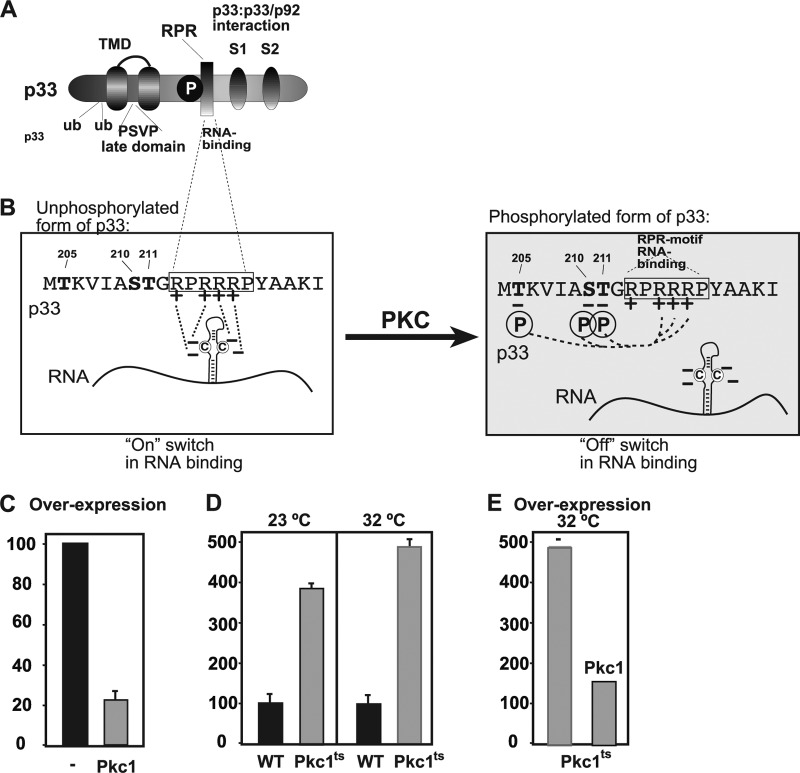Fig 2.
Overexpression of Pkc1p inhibits TBSV repRNA accumulation in yeast. (A) Schematic representation of the known domains in the tombusvirus replication protein p33. TMD, transmembrane domain; P, phosphorylation site; RPR, arginine-proline-rich RNA-binding domain. S1 and S2 are subdomains of the p33:p33-p92 interaction domain. The PSVP late domain, in connection with ubiquitinated lysines, is involved in binding to the host ESCRT components. (B) Binding of the unphosphorylated (left) and phosphorylated (right) forms of p33 to the viral RNA (71, 74). Phosphorylation is performed by Pkc in vitro, and the phosphorylated serine and threonine residues in p33 located in the vicinity of the RPR motif are shown in bold and labeled with the letter P. Note that the positively charged arginines within the RPR motif, critical in binding to the viral RNA, are predicted to be neutralized by the phosphorylated serine and threonine, as shown, resulting in a lack of RNA binding by p33. (C) Reduced TBSV repRNA accumulation in yeast overexpressing yeast Pkc1p. Overexpression was done from the GAL1 promoter. repRNA replication took place for 24 h at 29°C before RNA analysis. The accumulation level of DI-72 (+)repRNA (shown as percentages) was normalized based on that of 18S rRNA. Each experiment was repeated three times. (D) To launch TBSV repRNA replication, we expressed His6-p33 and His6-p92 from the copper-inducible CUP1 promoter and DI-72 (+)repRNA from the constitutive ADH1 promoter in the parental (wt, BY4741) and pkc1ts yeast strains. The yeast cells were cultured for 36 h at either 23°C (permissive temperature) or 32°C (semipermissive temperature) on 2% glucose SC minimal medium. Northern blot analysis was used to detect DI-72 (+)repRNA accumulation. The accumulation level of DI-72 (+)repRNA was normalized based on 18S rRNA. Each experiment was repeated three times. (E) Overexpression of yeast Pkc1p in pkc1ts yeast strains reduced TBSV repRNA accumulation. The yeast cells were cultured for 36 h at 32°C (semipermissive temperature).

